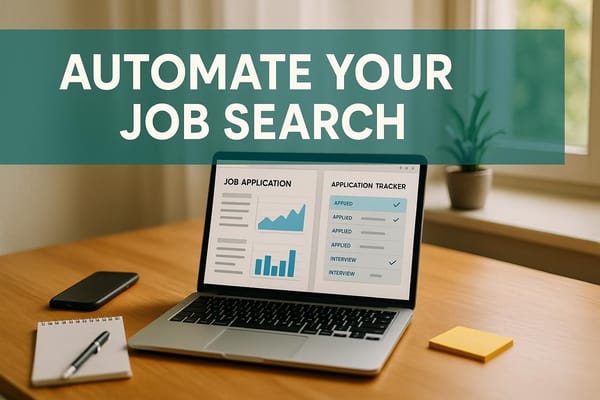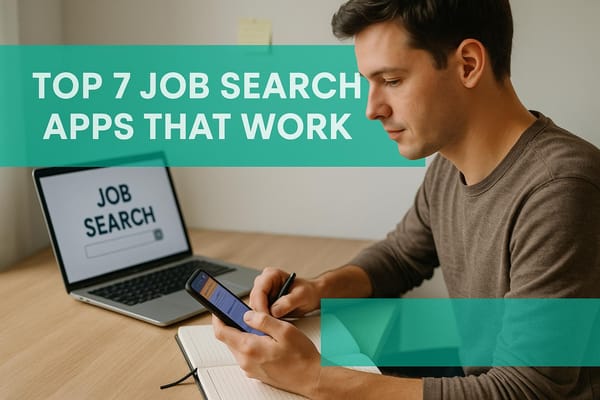Legacy IT to AI/ML: Transition Guide
Transitioning from legacy IT to AI/ML roles is achievable by leveraging existing skills and developing new competencies.

Transitioning from legacy IT to AI/ML roles can feel daunting, but it’s entirely achievable with the right approach. Your IT background already gives you a strong foundation in areas like system architecture, SQL, and troubleshooting. These skills are highly relevant for AI/ML tasks such as building data pipelines, training models, and deploying solutions. However, you’ll need to expand your expertise into areas like Python programming, machine learning frameworks (e.g., TensorFlow, PyTorch), and statistical analysis.
Key Takeaways:
- Skills You Already Have: SQL, system architecture, scripting, and debugging.
- Skills to Develop: Machine learning basics, data preprocessing, cloud-based ML platforms, and math fundamentals.
- Tool Upgrades: Learn Python libraries (e.g., pandas, scikit-learn), cloud tools (AWS SageMaker, Azure ML), and containerization (Docker, Kubernetes).
- Practical Steps: Build a portfolio with real-world projects, map your skills to AI/ML job requirements, and use tools like Jobscan or Rezi to refine your resume.
- Job Search Tips: Focus on platforms like LinkedIn, Kaggle, and scale.jobs for tailored opportunities.
With consistent effort, most professionals transition into AI/ML roles within 12–18 months. Use your IT expertise to bridge the gap between legacy systems and AI/ML, showcasing your ability to deliver production-ready solutions. The key is a structured learning plan, hands-on experience, and a strong resume tailored to AI/ML roles.
How to Transition into AI & ML Engineering from Any Role | Career Switch Guide | AgileFever
Legacy IT vs. AI/ML Roles: What's Different
The move from traditional IT to AI/ML isn't just about picking up new tools - it’s about building systems that can think, learn, and adapt. This shift sets the stage for evaluating your current skills and identifying areas for growth.
Job Responsibilities: Then and Now
In legacy IT, much of the work revolves around keeping systems running smoothly. System administrators focus on server maintenance and patching. Database administrators handle structured queries and backups. Network engineers are busy configuring routers and securing firewalls.
In AI/ML roles, the focus shifts to creating systems that can predict, decide, and learn. Data scientists dive into datasets to build predictive models. Machine learning engineers develop algorithms for tasks like image recognition or fraud detection. Meanwhile, MLOps engineers design pipelines to automate model retraining and deployment.
The day-to-day work changes significantly. Instead of responding to tickets, you might spend weeks refining algorithms to improve prediction accuracy or months developing recommendation systems that adapt to user behavior. It’s less about routine upkeep and more about experimentation and innovation.
Skills You Already Bring to the Table
Your existing IT expertise provides a solid starting point for venturing into AI/ML. Here’s how your current skills translate:
- SQL Mastery: Essential for querying databases and pulling training data.
- System Architecture Knowledge: Crucial for designing ML pipelines and managing data flow.
- Troubleshooting Techniques: The structured problem-solving and documentation you’re used to are invaluable for debugging and refining ML models.
- Version Control and Scripting: Familiarity with tools like Git, command-line interfaces, and scripting languages (Python, PowerShell) directly supports AI/ML workflows.
Even skills like performance monitoring and optimization - honed from managing servers - apply when tracking model performance and fine-tuning training processes.
Skills You’ll Need to Develop
While your IT background gives you a head start, there are specific areas where you’ll need to level up:
- Statistical Analysis and Math Fundamentals: Learn probability distributions, hypothesis testing, and linear algebra basics.
- Modern Programming Tools: Get comfortable with libraries like pandas for data manipulation, scikit-learn for machine learning, and frameworks like TensorFlow or PyTorch for deep learning.
- Data Preprocessing and Feature Engineering: Master cleaning datasets, handling missing values, and transforming data into formats suitable for machine learning algorithms.
- Model Evaluation and Validation: Understand techniques like cross-validation, detecting overfitting, and using performance metrics to assess your models.
- Cloud-Based ML Platforms: Familiarize yourself with platforms like AWS SageMaker, Google Cloud AI Platform, or Azure Machine Learning, which streamline training, deployment, and monitoring workflows.
Finally, it’s essential to build business knowledge around AI. This means understanding real-world applications, identifying industry use cases, and learning how to explain technical concepts to non-technical audiences. These skills will help you shift from simply maintaining systems to driving innovation.
Map Your Skills and Find Gaps
Before jumping into learning new AI/ML concepts, it’s crucial to understand where you currently stand. This step is key to transitioning from legacy IT roles to AI/ML positions. A clear assessment of your skills helps you focus on addressing the areas where you need growth.
Build a Skills Comparison Chart
A simple chart comparing your current skills to AI/ML job requirements can be a game-changer. It highlights where your expertise aligns and where you need improvement - especially for interview preparation. Start by listing your existing technical skills in one column and match them with specific AI/ML job requirements from actual postings.
For example:
- Database management: Your SQL skills for system monitoring can serve as a foundation for extracting training datasets, an essential part of AI workflows.
- Scripting knowledge: Familiarity with PowerShell or Bash translates to Python automation for building ML pipelines.
- Server performance monitoring: This can evolve into tracking model performance in production environments.
You might also find overlap in areas like cloud platforms (AWS, Azure) and debugging skills. Troubleshooting models often follows the same logical patterns as diagnosing system issues. Even your Git experience can be applied to ML version control.
However, gaps often appear in areas like mathematical foundations, specialized libraries, and data science workflows. For instance:
- If you're strong in system architecture, you might need to learn statistical analysis.
- Networking expertise won’t directly help with feature engineering.
- A background in security doesn’t cover model validation techniques.
To organize this, create a simple three-column chart:
- Current Skill
- AI/ML Equivalent
- Gap Level (None/Partial/Complete)
This visual guide not only helps you map out your learning journey but also makes it easier to explain your transferable skills to potential employers. Once you’ve created this chart, validate your self-assessment with objective tools.
Assess Your Current Level
Leverage AI tools to compare your resume against AI/ML job requirements. These tools provide detailed reports that highlight where your skills align and where you fall short.
Jobscan: This tool generates ATS match reports by comparing your resume to job descriptions. It identifies missing skills based on hard skills, education, job titles, and soft skills.
Rezi.ai: Rezi’s "Rezi Score" system evaluates your resume across 23 criteria, including ATS keyword targeting and content analysis. With over 3 million users and an average review score of 8.23/10, it’s a reliable option for understanding how well your profile matches AI/ML roles.
"Rezi is an awesome AI-based resume builder that includes templates to help you design a resume that is sure to check the boxes when it comes to applicant tracking systems. This is a great jumping off point to kickstart a new resume." – Ashley Stahl, Career Contributor
Teal: Teal’s premium tier ($13/week) offers unlimited keyword matching and detailed skill gap analysis. It uses job description keywords to identify qualifications you lack and provides actionable recommendations. With over 3.2 million members and a 4.4+ rating, it’s a popular choice for job seekers.
In addition to these tools, review 10-15 AI/ML job postings to identify recurring requirements like “3+ years of Python experience” or “familiarity with TensorFlow.” Compare these expectations against your actual experience - not what you think you can pick up quickly.
You can also take free skill assessments on platforms like Coursera or edX in areas such as statistics, Python programming, and machine learning fundamentals. These tests provide baseline scores and recommend courses to fill in knowledge gaps.
To keep track, rate your skills on a 1-5 scale and record them in a spreadsheet. This inventory will serve as the foundation for your personalized learning plan.
Learn Core AI/ML Skills: Step-by-Step Plan
Once you've assessed your current skills, it's time to create a learning roadmap that blends theory with hands-on practice. Your IT background gives you a unique advantage here. Skills like systems thinking and troubleshooting, which are second nature to you, will be incredibly useful as you dive into the world of AI and machine learning. This plan builds on your existing strengths to help you transition smoothly into AI/ML roles.
Technical Skills to Focus On
To get started, you'll need to master Python and its key libraries, understand the core concepts of machine learning (both supervised and unsupervised), and brush up on essential math topics like statistics, probability, and linear algebra. Look for courses that don't just teach theory but also include practical, hands-on projects. These skills will form the backbone of your ability to tackle real-world challenges.
Gain Practical Experience Through Projects and Competitions
The best way to solidify your knowledge is by applying it. Start with projects that mimic real-world business scenarios - like developing predictive models, creating data visualizations, or building end-to-end applications.
Participating in community contests or tackling open-source projects is another excellent way to gain experience. Not only will this deepen your understanding, but it will also help you build a portfolio that showcases your skills to potential employers. A strong portfolio is a powerful tool when entering a competitive field like AI/ML.
Balancing Learning with a Full-Time Job
If you're working full-time, juggling responsibilities can be challenging, but it's absolutely doable with the right approach. Create a consistent study schedule that fits into your routine.
Whenever possible, try to apply AI/ML techniques in your current role. This not only reinforces your learning but also demonstrates initiative. Joining study groups can provide support and motivation, and setting clear milestones will help you track your progress and stay on course.
Update Your Tools: AI/ML Frameworks and Platforms
Once you've outlined the skills you need, the next step is upgrading your toolkit to tackle AI/ML projects effectively. Transitioning from traditional IT systems to AI/ML workflows means swapping out old tools for new ones. Instead of command-line interfaces and proprietary systems, you'll be working with Python libraries, cloud platforms, and containerized environments. While there's a learning curve, your background in systems administration will give you a head start in understanding how these tools fit together.
Essential Tools and Platforms
Python frameworks are the backbone of AI/ML development. Here’s what you’ll need:
- TensorFlow: Ideal for production deployments and supporting mobile or edge devices.
- PyTorch: Known for its flexibility, making it great for debugging and research.
- Scikit-learn: A go-to for traditional machine learning tasks like regression, classification, and clustering. Its clean APIs make it perfect for data preprocessing and model evaluation.
For cloud-based scalability, platforms like AWS SageMaker, Google Vertex AI, and Azure ML are indispensable. They simplify deploying and managing AI/ML models.
Containerization is another must-have. Tools like Docker ensure your models run consistently across different environments, while Kubernetes handles container orchestration, managing tasks like load balancing and failover at scale.
Your development environment will also shift. Jupyter Notebooks will become your go-to tool for exploratory data analysis and prototyping. Think of them as interactive documents where you can combine code, visualizations, and notes seamlessly.
These tools not only modernize your workflow but also make it easier to integrate AI/ML into your existing systems through standardized APIs and data pipelines.
Bridging the Gap Between Legacy Systems and AI/ML
Your expertise in legacy IT systems is a huge advantage when it comes to integration. REST APIs are the key to connecting old and new technologies. By wrapping AI/ML models with frameworks like Flask or FastAPI, you can create endpoints that your existing applications can call without needing to understand the underlying machine learning.
To handle data flow, message queues like Apache Kafka or RabbitMQ are invaluable. They let your mainframe or ERP systems publish events that AI/ML pipelines can process in real-time or in batches.
ETL pipelines also need a modern twist. Tools like Apache Airflow allow you to orchestrate complex workflows that extract data from legacy systems, transform it for machine learning, and load results back into your existing databases.
When it comes to databases, AI/ML workflows often require different systems. While your current setup might rely on Oracle or SQL Server, you’ll find PostgreSQL (with TimescaleDB for time-series data) or MongoDB (for document storage) more suitable for AI/ML tasks. Building data bridges between these systems ensures smooth syncing without disrupting operations.
Monitoring and logging take on a new dimension in AI/ML. Tools like MLflow help track model performance, while Prometheus and Grafana monitor system metrics. Your experience with traditional monitoring will come in handy, but you’ll need to learn new metrics like prediction latency, model drift, and data quality scores.
The best way to start? Pick a single legacy system and a straightforward AI/ML use case. Build a proof of concept that demonstrates value while keeping disruptions to a minimum. Your familiarity with data formats and network protocols will speed up the integration process.
With these tools at your disposal, you’ll be well-equipped to bridge the gap between legacy systems and AI/ML, setting the stage for impactful projects.
Find and Land AI/ML Jobs
Your background in legacy IT gives you a unique edge in the competitive world of AI/ML. The key to standing out lies in showcasing transferable skills, targeting the right platforms, and nailing technical interviews. While platforms like LazyApply and Simplify are popular for job hunting, scale.jobs offers a more tailored, human-focused approach, especially for professionals transitioning from legacy IT to AI/ML roles. The next step? Perfect your resume and create a portfolio that bridges your IT expertise with AI/ML success.
Fix Your Resume and Build a Portfolio
Your resume needs to speak directly to AI/ML hiring managers. Start by rephrasing your legacy IT accomplishments to highlight measurable outcomes. For example, instead of saying, "Managed database queries", try: "Optimized database queries to reduce processing time by 40%, enabling real-time analytics for 10,000+ daily transactions."
Since most companies use ATS (Applicant Tracking Systems) to screen resumes, ensuring your resume is ATS-friendly is crucial. Tools like scale.jobs offer ATS-compliant resume builders, and their AI Assistant Pro can craft job-specific resumes for just $9/month during their launch offer.
For your portfolio, host 3–5 projects on GitHub that demonstrate real-world AI/ML applications. Start small and build progressively:
- A data analysis project using pandas and matplotlib.
- A machine learning classification task with scikit-learn.
- A deep learning project using TensorFlow or PyTorch.
Each project should include clear documentation that explains your methods, challenges, and the business value of your work.
Tie your legacy IT experience to AI/ML applications. For instance:
- If you worked on mainframe batch processing, show how you modernized workflows with Apache Airflow and cloud-based ML pipelines.
- If you have experience in network monitoring, create a predictive maintenance model to forecast equipment failures.
Best Job Search Platforms
LinkedIn remains the go-to platform for networking in AI/ML. Follow industry leaders like Andrew Ng, Cassie Kozyrkov, and François Chollet. Join groups like "Machine Learning Professionals", where recruiters often post job openings.
For more specialized opportunities, try:
- AngelList: Ideal for startups that value your ability to integrate legacy systems with AI/ML solutions.
- Kaggle: Besides competitions, their job board connects you with companies looking for hands-on machine learning expertise.
A standout option is scale.jobs, which is particularly effective for career transitions. Unlike automated platforms that may miss the nuances of your background, scale.jobs employs trained recruiters to position your legacy IT experience as a strategic asset. Their flat-fee pricing eliminates recurring costs, and they provide real-time WhatsApp updates and timestamped application tracking.
LazyApply vs. scale.jobs: Why Human-Powered Applications Win
- Human Expertise: scale.jobs combines ATS optimization with expert recruiters who tailor each application.
- Real-Time Updates: Get WhatsApp notifications and proof-of-work screenshots for transparency.
- Cost-Effective: A flat fee means no recurring subscriptions.
- Transition Support: They specialize in highlighting your legacy IT skills in a way that resonates with AI/ML employers.
With your resume polished and applications targeted, you’re ready to tackle the next big hurdle: the AI/ML interview process.
Prepare for AI/ML Interviews
AI/ML interviews test both your technical knowledge and your ability to apply it. Here’s what to focus on:
Technical Concepts: Be ready to discuss supervised vs. unsupervised learning, overfitting, and model evaluation metrics like precision, recall, and F1 scores.
Coding Challenges: Practice data manipulation with pandas and implement basic ML models. While your SQL skills from IT are valuable, boost your Python expertise with platforms like LeetCode and HackerRank, focusing on AI/ML-specific challenges.
System Design: Use your legacy IT experience to shine. For example, explain how you’d design a recommendation system or a fraud detection pipeline. Cover aspects like data storage, API design, scalability, and monitoring. Your ability to design complete systems - not just isolated ML models - sets you apart from candidates with purely academic backgrounds.
Behavioral Questions: Prepare examples that show adaptability and problem-solving. Frame your IT experience as a foundation for tackling AI/ML challenges. For instance: "When optimizing our backup system, I analyzed usage patterns, tested alternatives, and measured improvements - similar to how I’d develop and fine-tune ML models."
Finally, practice confidently telling your transition story. Explain why you’re moving into AI/ML, and emphasize how your IT experience equips you to build production-ready solutions, not just research prototypes. This reframes your journey as a strength, making you a standout candidate.
Your Path from Legacy IT to AI/ML Success
Shifting from legacy IT to the world of AI and machine learning (ML) lets you combine your deep systems expertise with cutting-edge AI skills - creating a profile that many companies actively seek.
The key is to build on the skills you already have, starting with manageable steps. Dedicate 10–15 hours a week to learning Python and the basics of ML. Many professionals transitioning into AI/ML take about 6–12 months to establish a solid foundation before fully diving into the field.
Your experience in legacy IT gives you a distinct edge. You already understand how production environments work and can bridge the gap between older systems and new technologies - a skill highly valued by companies like IBM, Microsoft, and Oracle.
Since AI/ML is a fast-moving field, set aside time each week to read research papers and experiment with emerging tools. Staying updated is essential to maintaining your relevance and expertise.
Networking is another critical step. Attend local AI/ML meetups and become active in online communities. Your legacy IT background can spark meaningful conversations and often lead to unexpected opportunities.
When you're ready to transition, platforms like scale.jobs can be a game-changer for your job search. Their human-driven approach is particularly effective for career changers, as recruiters can position your legacy IT experience as a strategic asset rather than a limitation. This steady, methodical approach prepares you for a successful leap into the AI/ML job market.
With consistent effort, most professionals start seeing results within 12–18 months. Use your problem-solving abilities and hands-on projects to demonstrate your growing expertise. Transitioning to AI/ML isn’t just about learning new tools - it’s about stepping into a dynamic, high-growth field with significant earning potential.
FAQs
What key skills should I focus on to transition from a legacy IT role to an AI/ML career?
Transitioning from a traditional IT role to a career in AI or machine learning means diving into a blend of technical, analytical, and problem-solving skills. The journey starts with building a strong foundation in programming languages like Python and R, which are staples in the AI/ML field. Alongside this, get comfortable with data manipulation tools like SQL, Pandas, and NumPy - working with data is at the heart of everything in AI/ML.
Next, dig into the core concepts of machine learning, such as supervised and unsupervised learning, neural networks, and ways to evaluate models. To gain practical experience, explore frameworks like TensorFlow or PyTorch, which are widely used for building and training models. A solid understanding of statistics, probability, and linear algebra will also be crucial, as these areas underpin many AI/ML algorithms.
To stand out, keep an eye on industry trends and work on real-world projects to showcase your skills. Online courses, certifications, and platforms like scale.jobs can help you identify areas to improve and guide your learning. By combining technical know-how with hands-on experience, you'll be well-prepared to step into an AI/ML role.
How can I leverage my IT skills, like SQL and system architecture, to transition into AI/ML roles?
Transitioning into AI/ML roles from an IT background is entirely doable, thanks to the overlap in foundational skills. For example, SQL plays a crucial role in handling and querying large datasets - an essential part of AI/ML workflows. Additionally, a solid grasp of system architecture can be a huge advantage when designing efficient, scalable machine learning pipelines.
To kick things off, dive into programming languages like Python or R, as they’re the go-to tools in the AI/ML space. Leverage your current skill set by learning machine learning frameworks such as TensorFlow or PyTorch, and get familiar with core concepts like data preprocessing, model training, and evaluation. Online courses and certifications, paired with hands-on projects, can help you bridge the knowledge gap. Plus, platforms like scale.jobs offer tailored job search tools and resume optimization services to help you highlight your growing expertise.
What are the best ways to create a portfolio that highlights my AI/ML skills for potential employers?
To build an impressive AI/ML portfolio, focus on demonstrating both your technical skills and practical experience. Start by working on projects that address real-world challenges using AI/ML techniques like predictive modeling, natural language processing, or computer vision. Share these projects on platforms such as GitHub or your personal portfolio website. Be sure to include detailed descriptions of the problem you tackled, your methodology, and the outcomes you achieved.
Employers are particularly interested in hands-on experience, so showcase the datasets you’ve worked with, the algorithms you’ve implemented, and the tools or frameworks you’ve used - like TensorFlow, PyTorch, or scikit-learn. Participating in open-source projects or AI/ML competitions on platforms like Kaggle is another great way to highlight your abilities. These activities not only demonstrate your technical expertise but also show your ability to collaborate and compete in real-world scenarios.
Lastly, ensure your portfolio is well-structured and visually engaging. Include clear documentation, code snippets, and visuals like graphs or charts to make your work easy to follow. A polished and organized portfolio will help employers quickly grasp the value you bring to their team.




